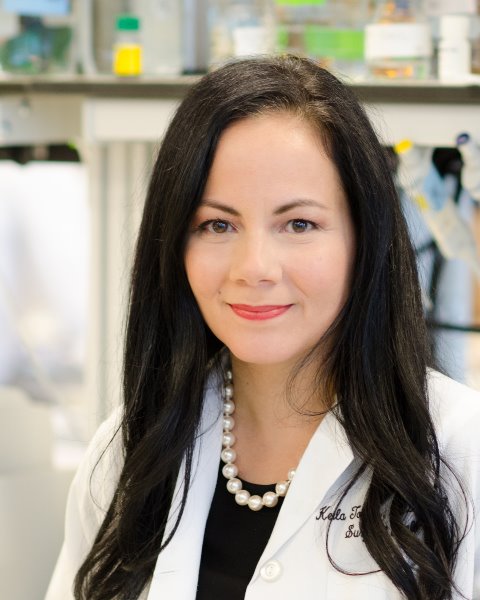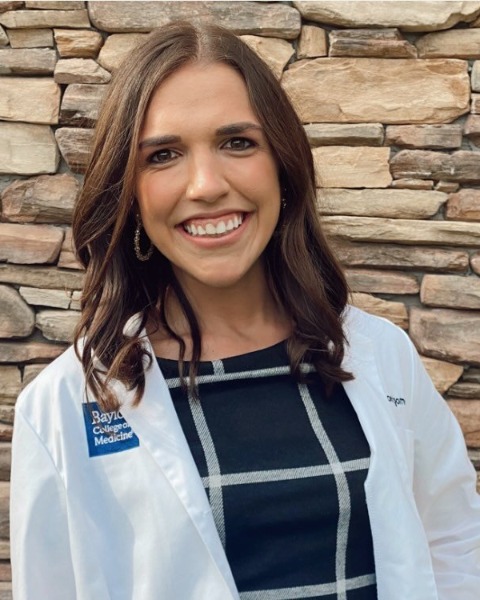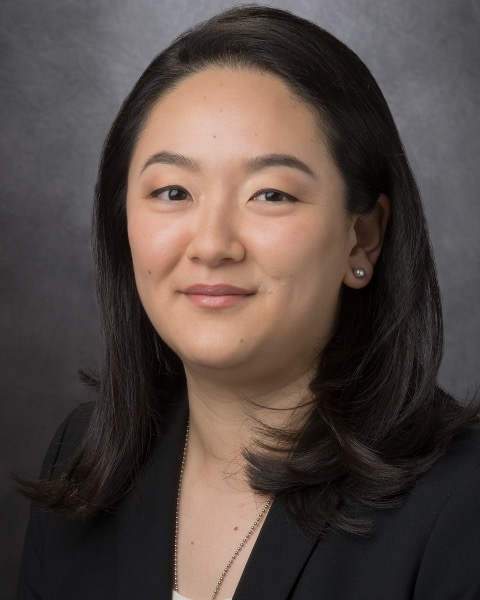Sarcoma
E420: Use of the MasSpec Pen Technology for accurate determination of surgical margins of myxofibrosarcomas (MFS)

Keila E. Torres, MD
Associate Professor
Department of Surgical Oncology, The University of Texas MD Anderson Cancer Center
Houston, Texas, United States
Pujita Munnangi, BS (she/her/hers)
Medical Student
Texas A&M University, Texas, United States
Ashley E. Montgomery, BA
Medical Student
Baylor College of Medicine
Houston, Texas, United States
Alicia Gingrich, MD (she/her/hers)
Complex General Surgical Oncology Fellow
University of Texas MD Anderson Cancer Center
Houston, Texas, United States- SL
Sharon Landers, PhD
Research Scientist
MD Anderson Cancer Center, United States - SW
Sintawat Wangsiricharoen, MD
Assistant Professor
Pathology and Laboratory Medicine at Oregon Health and Science University
Portland, Oregon, United States - AB
Angela Bhalla, PhD
Research Scientist
MD Anderson Cancer Center, United States - PL
Patrick P. Lin, MD
Professor in the Department of Orthopaedic Oncology
MD Anderson Cancer Center, United States - VL
Valerae O. Lewis, MD
Professor in the Department of Orthopaedic Oncology
MD Anderson Cancer Center, United States - BM
Bryan S. Moon, MD
Professor in the Department of Orthopaedic Oncology
MD Anderson Cancer Center, United States - SP
Shalin Patel, MD
Assistant Professor
MD Anderson Comprehensive Cancer Center, United States 
Christopher P. Scally, M.D.
Assistant Professor
Department of Surgical Oncology, The University of Texas MD Anderson Cancer Center, Houston TX, USA, United States
Emily Z. Keung, MD (she/her/hers)
Assistant Professor of Surgical Oncology
The University of Texas MD Anderson Cancer Center
Houston, Texas, United States.jpg)
Christina L. Roland, MD MS
Associate Professor of Surgical Oncology
The University of Texas MD Anderson Cancer Center
Houston, Texas, United States
Kelly K. Hunt, MD (she/her/hers)
Professor & Chair
Department of Breast Surgical Oncology, MD Anderson Cancer Center, Houston, TX, USA
Houston, Texas, United States- IM
Ian McCutcheon, MD
Professor in the Department of Neurosurgery
MD Anderson Cancer Center, United States - JB
Justin E. Bird, MD
Associate Professor in the Department of Orthopaedic Oncology
MD Anderson Cancer Center, United States - WY
Wendong Yu, MD, PhD
Associate Professor, Department of Pathology
MD Anderson Cancer Center, United States - LE
Livia S. Eberlin, PhD
Associate Professor of Surgery
Baylor College of Medicine, United States
Submitter(s)
ePoster Abstract Author(s)
Author(s)
Myxofibrosarcoma (MFS) is a subtype of soft tissue sarcoma characterized by a diffusely infiltrative pattern. This presents a challenge during surgical resection due to microscopic extension into the dermis and skeletal muscles along with multidirectional signal infiltration along fascial planes on MRI. Obtaining negative margins may be challenging despite careful preoperative planning due to difficulty identifying borders intraoperatively. This study seeks to address this problem by evaluating the ability of the MasSpec Pen (MSPen), a nondestructive and noninvasive biocompatible pen coupled with a mass spectrometer to accurately distinguish MFS from normal surrounding tissues.
Methods:
Eight frozen MFS tissues from patients were compared with 11 control tissues comprising fat, nerve, skeletal, and smooth muscle; histologies were confirmed by pathology. The MSPen integrated with an Orbitrap Exploris mass spectrometer was applied to samples. Preliminary statistical classification training models were created with machine learning using logistic regression modified by Lasso and compared to assess for optimal accuracy, sensitivity, and specificity. Significance of microarrays (SAM) analysis was performed to determine if molecular m/z ratios from MFS and normal tissues were statistically different.
Results:
We obtained and analyzed 8 MFS and 11 normal tissues (training set) with the MSPen, to create a statistical classification model. Results for a m/z range of 500-950 (glycerophospholipid range) included overall accuracy of 84.21%, sensitivity of 87.5%, and specificity of 81.8%. Predictive features mathematically favoring the selection of MFS to normal tissue selected by Lasso included four m/z values (Table 1). The m/z value 766.54 corresponded with some phosphatidylethanolamine (PE) lipids; PE lipids have been found in higher abundance in certain cancer types compared with normal using liquid chromatography MS, demonstrating the significance of this preliminary model in classifying MFS vs normal. Several m/z values were lower in MFS compared to the normal samples upon SAM analysis; of these, the molecules with the largest differences include: DG (29:2) at m/z value 521.42, DG (18:1/15:0) at m/z values 593.48 and 594.48, and DG (33:2) at m/z value 577.48.
Conclusions:
The MSPen and machine learning offer promising technology for sarcoma diagnosis and discrimination from normal tissue in vivo. These data support further evaluation of the MSPen in the operating room for in vivo and ex vivo use in conjunction with standard surgical tools for margin assessment.
Learning Objectives:
- Discuss challenges assessing surgical margins for myxofoibrosarcoma
- Evaluate myxofibrosarcoma based on lipid and metabolite profiles
- Implement new tools for in vivo and ex vivo surgical margin assessment
